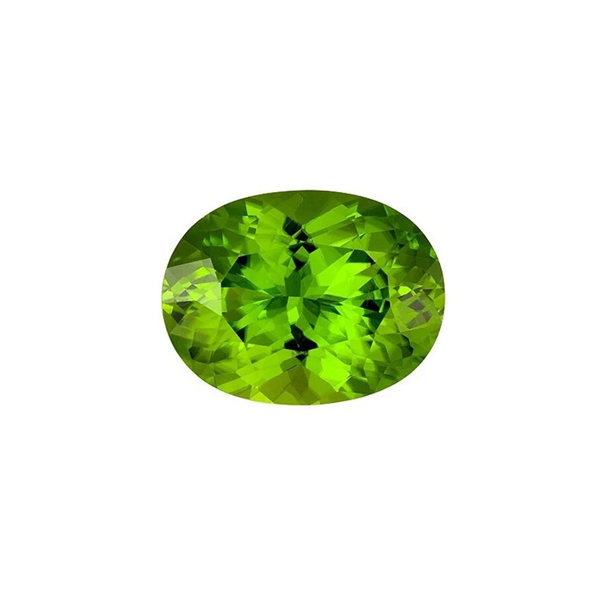Peridot is a variant of forsterite, belonging to the gem-quality olivine group. It has a high amount of magnesium in its crystal structure and has a vitreous luster.
It is an idiochromatic gem, meaning its color comes from the basic chemical composition of the mineral itself and not from impurities and is therefore found only in green tones. It is one of the few gemstones with this characteristic
- Color: Peridot is best known for its rich green color, which ranges from olive green to a bright, almost neon green. The intensity of the green can vary depending on the iron content in the crystal structure.
- Hardness: Peridot has a hardness of 6.50 to 7 on the Mohs scale, making it suitable for various types of jewelry, although it may require some care to avoid scratches.
- Origin: Peridot is found in various locations around the world, with major deposits in Pakistan, Myanmar, Afghanistan, and China. Different deposits can produce peridots with unique shades and clarity.
- Clarity: Peridot typically has good to excellent clarity, with few visible inclusions. Stones with high transparency and vibrant green color are highly prized.
- Cut: Peridot is commonly cut into various shapes, including oval, round, knob, or octagonal cuts.
- Treatment: Peridot is generally untreated, as its natural color and clarity are more than acceptable.
- Value: Peridot value depends on factors such as color intensity, clarity, cut quality, size, and origin. Specimens from Pakistan are most prized for their bright, vivid green hues.
** Please consult prices based on quality and size.








